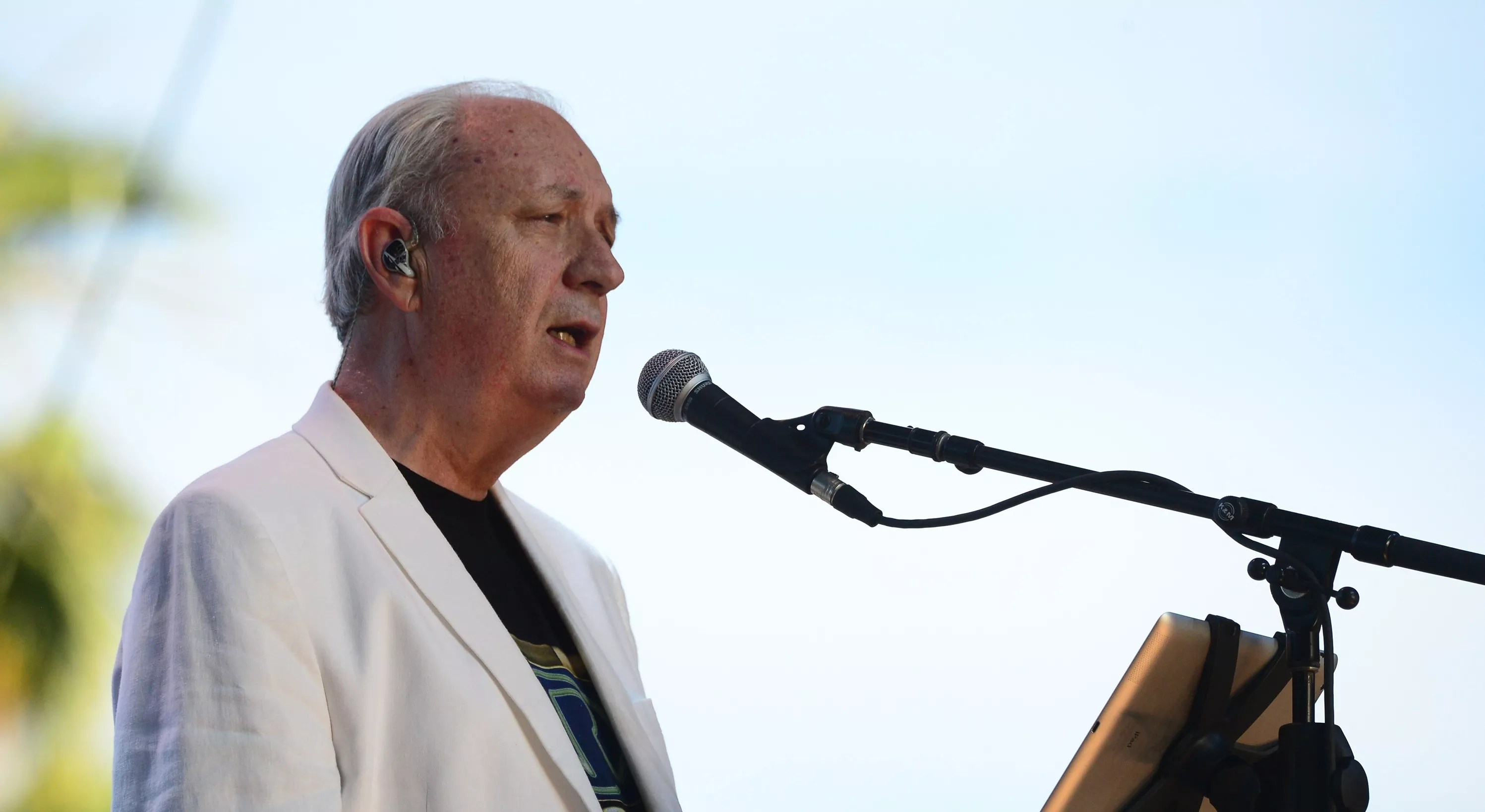
Frazer Harrison/Getty

Audio By Carbonatix
Here is the definition of what you would call a “fun fact”: Michael Nesmith’s mother invented Wite-Out.
While Bette Nesmith Graham was toiling away to perfect and market what would eventually be trademarked as Liquid Paper, her son Michael was on the precipice of becoming one of the biggest musical stars of the 1960s as a part of the breakout TV show and pop group The Monkees.
Nesmith, a native Texan who was born in Houston and grew up in Dallas, died Dec. 10 at the age of 78, just weeks after wrapping up a Monkees farewell tour with drummer/singer Mickey Dolenz.
For a time, The Monkees (composed of Nesmith, Dolenz, guitarist Peter Tork and ever-adored Englishman Davy Jones) rivaled both The Beatles and The Rolling Stones in terms of pure popularity, with public adulation that extended beyond the success of the TV show The Monkees. Their 1967 album More of The Monkees became the best-selling album of 1967, selling more copies that year than Sgt. Pepper’s Lonely Hearts Club Band. Publicly, the band was a force to be reckoned with, but privately they were struggling to maintain a grasp on their own image.
The Monkees were actually actors assembled for the TV show, and Nesmith was the only actual “musician” in the group initially. Mickey Dolenz recently told Rolling Stone that it was Nesmith who actually taught him his first drum parts. The three actor-turned musicians (and Nesmith) wished to have creative control over their works but were not allowed by management to play their own instruments or write their own songs (the only two songs on More of The Monkees by a band member were both written by Nesmith).
Nesmith became the band’s biggest champion for becoming creatively autonomous and was eventually triumphant as their follow-up albums Headquarters and Pisces, Aquarius, Capricorn & Jones Ltd. were mostly Monkee-made. On the latter, Nesmith sang nearly half of the album’s 14 tracks, including the rich, colorful deep cuts “The Door Into Summer” and “What Am I Doing Hanging ‘Round?”
Outside of the band, Nesmith’s compositions “Mary, Mary,” and “Different Drum” were recorded by The Paul Butterfield Blues Band and The Stone Poneys, respectively, with the latter reaching no. 13 on the Billboard charts with the help of the Poneys’ lead singer, an up-and-coming powerhouse named Linda Ronstadt.
After the end of The Monkees, Nesmith ventured into the burgeoning country-rock scene with his group The First National Band, scoring a hit with the single “Joanne.” He began to churn out a series of cult-acclaimed but otherwise publicly invisible country-rock records that stood alongside other country-rock pioneers like Gram Parsons and the Flying Burrito Brothers.
“I’m heartbroken. I’ve lost a dear friend and partner. I’m so grateful that we could spend the last couple of months together doing what we loved best – singing, laughing, and doing shtick.” – The Monkees’ Mickey Dolenz
Later in the 1970s, with the explosion of acts like The Eagles, Nesmith told Rolling Stone: “I was heartbroken beyond speech. I couldn’t even utter the words ‘The Eagles’ and I loved Hotel California and I love the Eagles, the Flying Burrito Brothers, and the Byrds’ Sweetheart of the Rodeo, all that stuff. That was right in my wheelhouse and I was agonized, Van Gogh-agonized, not to compare myself to him, but I wanted to cut something off because I was like, ‘Why is this happening?’ The Eagles now have the biggest-selling album of all time and mine is sitting in the closet of a closed record company?”
Nesmith then began a career of music production, film production (executive producing films like Repo Man), novel writing, car racing, and creating a music video television program called PopClips, which was eventually sold to Warner Brothers, who renamed it MTV. Nesmith was subsequently awarded the first-ever Grammy Award for Long-Form Music Video for his-hour long skit-and-video compilation Elephant Parts. Wow.
In the twilight years of his career, Nesmith continued to make music and even embarked on a series of Monkee reunions before and after Jones’ death in 2012 and Tork’s in 2019. His final performance in Dallas came in September of 2021, less than three months before his death.
Immediately after Nesmith’s death, Dolenz – the sole surviving Monkee – took to Twitter to offer his tribute: “I’m heartbroken. I’ve lost a dear friend and partner. I’m so grateful that we could spend the last couple of months together doing what we loved best – singing, laughing, and doing shtick. I’ll miss it all so much. Especially the shtick. Rest in peace, Nez.”
Nesmith’s contributions to music may have gone unnoticed by the “cool kids” in his heyday, but it’s never too late to discover all of the wonders of his career. He was still his mother’s greatest invention.